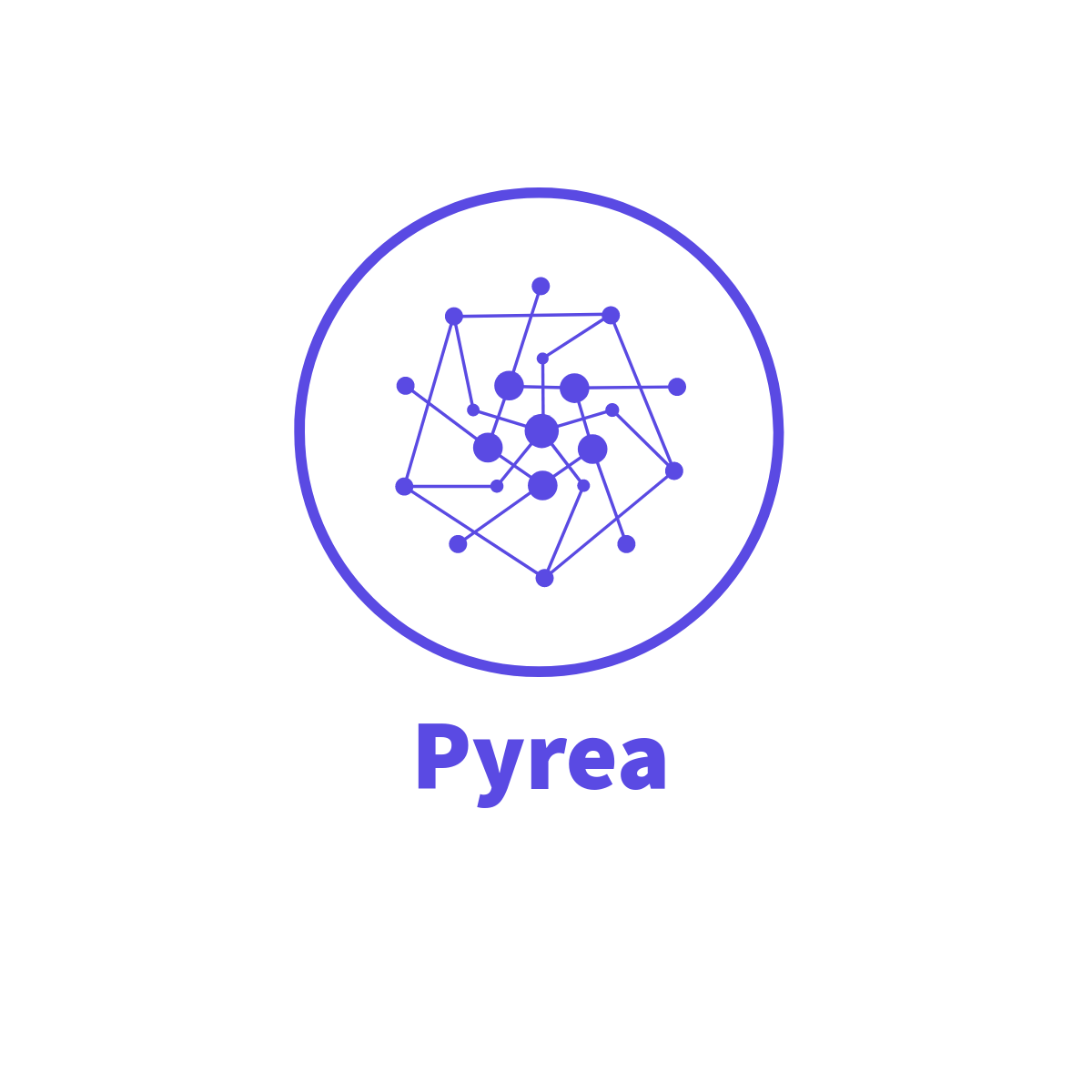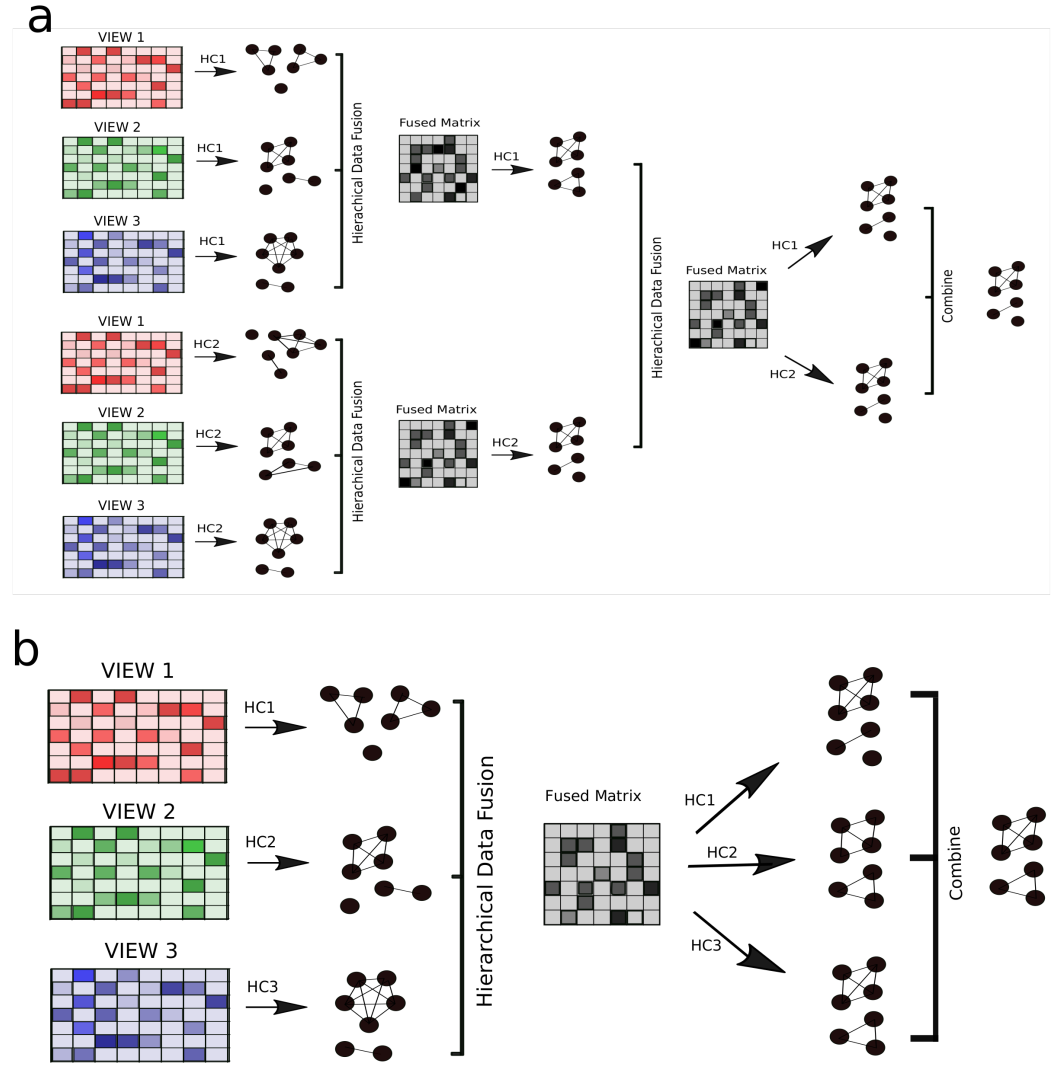Multi-view clustering with deep ensemble structures.
Project description
Pyrea

Multi-view clustering with flexible ensemble structures.
The name Pyrea is derived from the Greek word Parea, meaning a group of friends who gather to share experiences, values, and ideas.


Installation
Install Pyrea using pip:
pip install pyrea
This will install the latest version of Pyrea from PyPI.
Usage
API
Please note that Pyrea is work in progress. The API may change from version to version in the coming weeks, which may introduce breaking changes to legacy code.
In Pyrea, your data are organised in to views. A view consists of the data in the form of a 2D matrix, and an associated clustering algorithm (a clusterer).
To create a view you must have some data, and a clusterer:
import pyrea
# Create your data, which must be a 2-dimensional array/matrix.
d = [[1,2,3],
[4,5,6],
[7,8,9]]
# Create a clusterer
c = pyrea.clusterer("ward")
v = pyrea.view(d, c)
You now have a view v, containing the data d using the clustering algorithm
c. Note that many views can share the same clusterer, or each view may have a
unique clusterer.
As this is a library for multi-view ensemble learning, you will normally have multiple views.
A fusion algorithm is therefore used to fuse the clusterings created from multiple views. Therefore, our next step is to create a fuser object:
f = pyrea.fuser('agreement')
With you fusion algorithm f, you can execute an ensemble. The ensemble is
created with a set of views, a fusion algorithm, and a clustering algorithm,
and returns a new view:
v_res = pyrea.execute_ensemble([v1, v2, v3], f, c)
This newly created view, v_res can subsequently be fed into another ensemble,
allowing you to create stacked ensemble architectures, with high flexibility.
A full example is shown below, using random data:
import pyrea
import numpy as np
# Create two datasets with random values of 1000 samples and 100 features per sample.
d1 = np.random.rand(1000,100)
d2 = np.random.rand(1000,100)
# Define the clustering algorithm(s) you want to use. In this case we used the same
# algorithm for both views
c = pyrea.clusterer('ward')
# Create the views using the data and the same clusterer
v1 = pyrea.view(d1, c)
v2 = pyrea.view(d1, c)
# Create a fusion object
f = pyrea.fuser('agreement')
# Execute an ensemble based on your views, fusion algorithm, and clusterer
v_res = pyrea.execute_ensemble([v1, v2], f, c)
Ensemble Structures
Complex structures can be built using Pyrea.
For example, examine the two structures below:
We will demonstrate how to create deep and flexible ensemble structures using the examples a) and b) from the image above.
Example A
This ensemble consists of two sets of three views, which are clustered, fused, and then once again combined in a second layer.
We create two ensembles, which represent the first layer of structure a) in the image above:
import pyrea
import numpy as np
# Clusterers:
hc1 = pyrea.clusterer('ward')
hc2 = pyrea.clusterer('complete')
# Fusion algorithm:
f = pyrea.fuser('agreement')
# Create three random datasets
d1 = np.random.rand(100,10)
d2 = np.random.rand(100,10)
d3 = np.random.rand(100,10)
# Views for ensemble 1
v1 = pyrea.view(d1, hc1)
v2 = pyrea.view(d2, hc1)
v3 = pyrea.view(d3, hc1)
# Execute ensemble 1 and retrieve a new view, which is used later.
v_ensemble_1 = pyrea.execute_ensemble([v1, v2, v3], f, hc1)
# Views for ensemble 2
v4 = pyrea.view(d1, hc2)
v5 = pyrea.view(d2, hc2)
v6 = pyrea.view(d3, hc2)
# Execute our second ensemble, and retreive a new view:
v_ensemble_2 = pyrea.execute_ensemble([v4, v5, v6], f, hc1)
# Now we can execute a further ensemble, using the views generated from the
# two previous ensemble methods:
v_final = pyrea.execute_ensemble([v_ensemble_1, v_ensemble_1], f, hc1)
As for structure b) in the image above, this can implemented as follows:
import pyrea
import numpy as np
# Clustering algorithms
c1 = pyrea.clusterer('ward')
c2 = pyrea.clusterer('complete')
c3 = pyrea.clusterer('single')
# Fusion algorithm
f = pyrea.fuser('agreement')
# Create the views with the random data directly:
v1 = pyrea.view(np.random.rand(100,10), c1)
v2 = pyrea.view(np.random.rand(100,10), c2)
v3 = pyrea.view(np.random.rand(100,10), c3)
v_res = pyrea.execute_ensemble([v1, v2, v3], f, [c1, c2, c3])
Notice how the ensemble is passed 3 clustering algorithms [c1, c2, c3], and these are combined for a final clustering.
Extensible
Pyrea has been designed to be extensible. It allows you to use Pyrea's data fusion techniques with custom clustering algorithms that can be loaded in to Pyrea at run-time.
By providing a View with a ClusterMethod object, it makes providing custom clustering algorithms uncomplicated. See Extending Pyrea for details.
Work In Progress and Future Work
Several features are currently work in progress, future updates will include the features described in the sections below.
Genetic Algorithm
Pyrea can select the best clustering algorithms and fusion algorithms based on a genetic algorithm optimisation technique.
HCfused Clustering Algorithm
A novel fusion technique, developed by one of the authors of this software package, named HCfused, will be included soon in a future update.
Details of the HCfused method can be found here:
Pfeifer, Bastian, and Schimek, Michael G. "A hierarchical clustering and data fusion approach for disease subtype discovery" Journal of Biomedical Informatics 113 (2021): 103636.
https://www.sciencedirect.com/science/article/pii/S1532046420302641
Project details
Release history Release notifications | RSS feed
Download files
Download the file for your platform. If you're not sure which to choose, learn more about installing packages.













